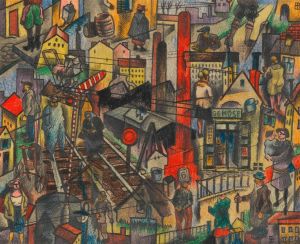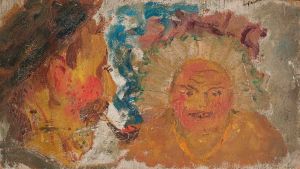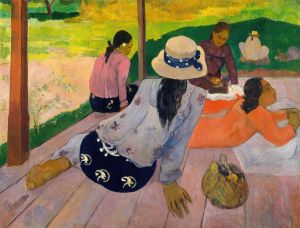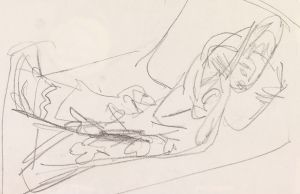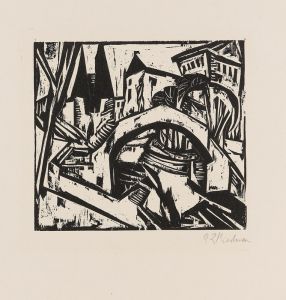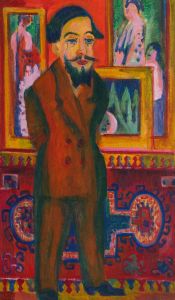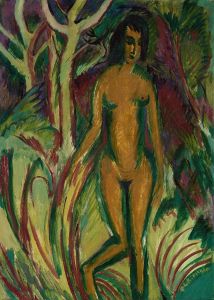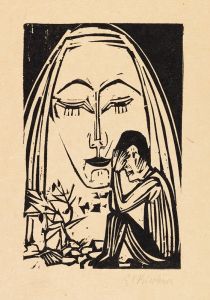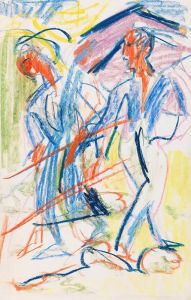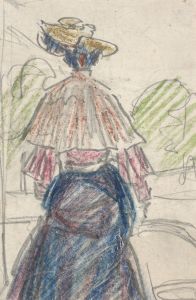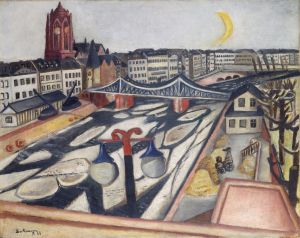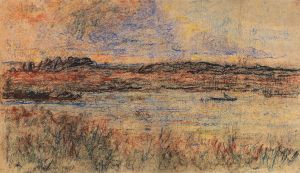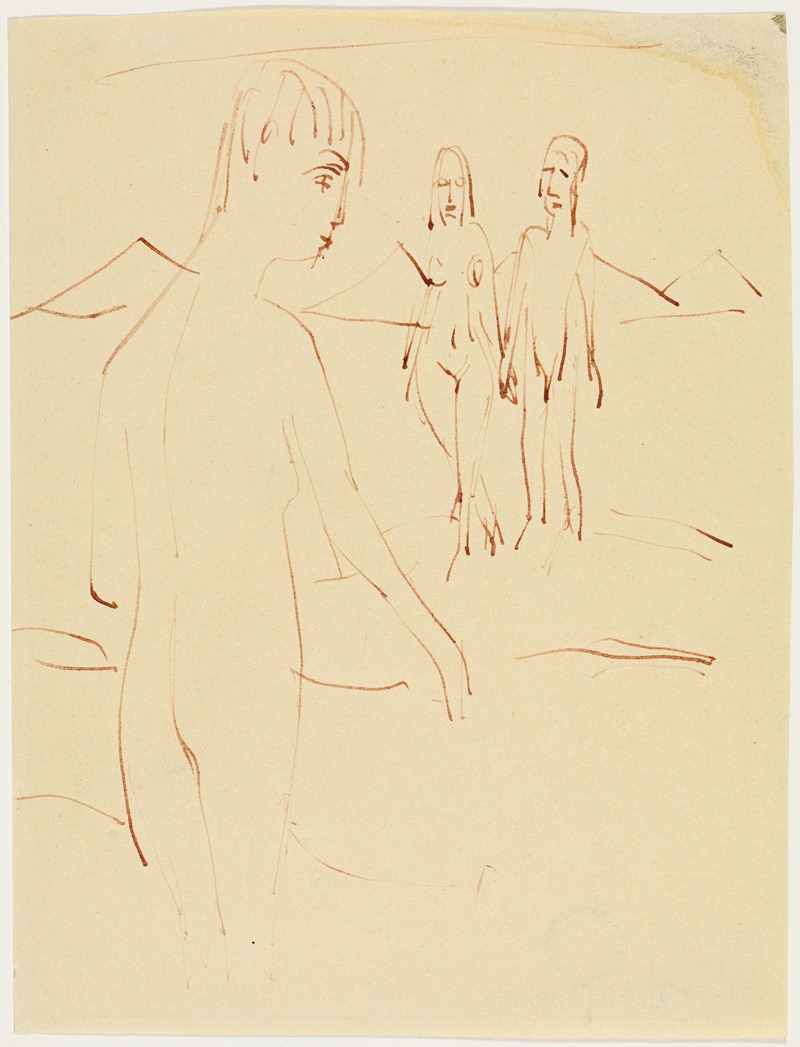
Drei stehende Akte im Freien
A hand-painted replica of Ernst Ludwig Kirchner’s masterpiece Drei stehende Akte im Freien, meticulously crafted by professional artists to capture the true essence of the original. Each piece is created with museum-quality canvas and rare mineral pigments, carefully painted by experienced artists with delicate brushstrokes and rich, layered colors to perfectly recreate the texture of the original artwork. Unlike machine-printed reproductions, this hand-painted version brings the painting to life, infused with the artist’s emotions and skill in every stroke. Whether for personal collection or home decoration, it instantly elevates the artistic atmosphere of any space.
Ernst Ludwig Kirchner's Drei stehende Akte im Freien (Three Standing Nudes in the Open) is a painting created by the German Expressionist artist, who was a founding member of the influential art group Die Brücke (The Bridge). This group, established in 1905, sought to break away from traditional academic art and embraced a more modern, expressive style that emphasized emotional intensity, bold colors, and dynamic compositions.
The painting depicts three nude female figures standing outdoors, a recurring theme in Kirchner's work that reflects his fascination with the human form and its connection to nature. The figures are rendered in Kirchner's characteristic style, with elongated proportions, angular contours, and vibrant, non-naturalistic colors. The setting is likely a natural landscape, suggested by the simplified and abstracted background elements, which are typical of Kirchner's approach to composition. The work exemplifies the artist's interest in exploring the harmony between humanity and the natural world, a theme that resonated strongly with the ideals of Die Brücke.
Kirchner's nudes often conveyed a sense of liberation and vitality, aligning with the group's rejection of societal conventions and their embrace of a more primal, unrestrained way of life. The painting's outdoor setting further emphasizes this connection to nature and freedom, which were central to the group's philosophy. The use of bold, expressive brushstrokes and a vivid color palette reflects Kirchner's desire to evoke emotional responses rather than adhere to realistic representation.
The exact date of creation for Drei stehende Akte im Freien is not definitively documented, but it is consistent with Kirchner's works from the early 1910s, a period when he was actively developing his mature style and producing many of his most iconic pieces. During this time, Kirchner and other members of Die Brücke often worked together in communal settings, drawing inspiration from each other and their shared commitment to artistic experimentation.
Kirchner's work, including Drei stehende Akte im Freien, was later classified as "degenerate art" by the Nazi regime in the 1930s, leading to the confiscation and destruction of many of his pieces. Despite this, his contributions to modern art have been widely recognized, and his works are now celebrated in major museums and collections worldwide.
Further details about the provenance or current location of Drei stehende Akte im Freien are not readily available. However, the painting remains an important example of Kirchner's exploration of the human figure and his role in shaping the Expressionist movement.





